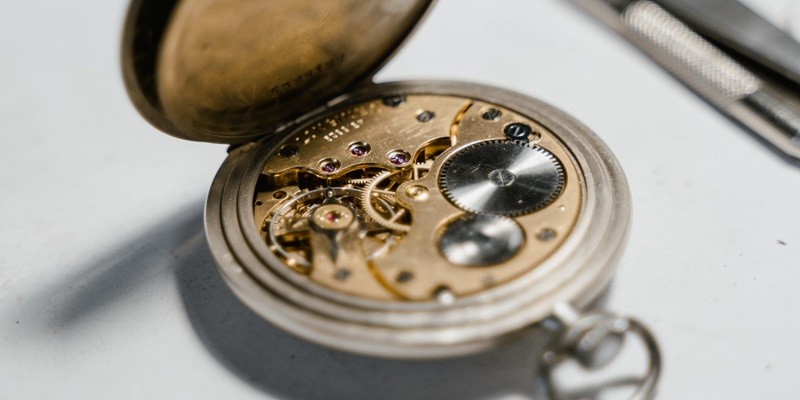Last Updated on June 18, 2025 by Jaclyn A. Neeley
Automatic mechanical watches are a marvel of engineering and craftsmanship. These timepieces not only tell the time but also fascinate us with their intricate inner workings. In this comprehensive guide, we will delve into the fascinating world of automatic mechanical watches, exploring how they work, their history, and the magic behind their accuracy.
How Does Automatic Mechanical Watch Work?
In this section, we will uncover the inner mechanisms of an automatic mechanical watch, explaining how it functions and keeps accurate time.
The Heartbeat of the Watch: The Balance Wheel
At the core of every automatic mechanical watch is the balance wheel. This tiny wheel, oscillating back and forth, is the heartbeat of the watch. Its rhythmic motion sets the pace for the timekeeping. Coupled with the hairspring, the balance wheel ensures precise timekeeping by regulating the release of energy from the mainspring.
Watch Movements: Essentials
Within the intricate workings of an automatic mechanical watch, watch movements play a crucial role in ensuring accurate timekeeping. Let’s explore the various types of watch movements that power these remarkable timepieces.
The Mainspring: The Power Source
The mainspring is where the energy for the watch is stored. When you wind the watch or wear it on your wrist, the mainspring tightens. As it unwinds slowly, it releases energy to power the watch. This continuous release of energy keeps the watch ticking.
Escapement Mechanism: The Timekeeper
To ensure that the energy from the mainspring is released in a controlled manner, automatic watches use an escapement mechanism. It consists of an escape wheel and a pallet fork. The escape wheel locks and releases the gear train, allowing the watch to advance one second at a time.
Gears and Wheels: Timekeeping Precision
The gear train in an automatic mechanical watch transmits energy from the mainspring to the escapement mechanism and hands. Each gear is meticulously crafted to ensure minimal friction and maximum efficiency. The precision of these gears is vital for accurate timekeeping.
The Dial and Hands: Displaying Time
The dial of the watch houses the hour, minute, and second hands. As the gear train receives energy from the mainspring and escapement mechanism, it drives these hands, displaying the time in an easy-to-read format on the watch face.
Winding Mechanism: Keeping the Watch Running
Automatic mechanical watches are designed to be self-winding. When worn regularly, the motion of your wrist winds the watch automatically. For watches that have not been worn, manual winding is required to start them.
Accuracy and Adjustment: Fine-Tuning Time
To maintain precise timekeeping, automatic mechanical watches are equipped with an adjustment mechanism. Watchmakers can fine-tune the balance wheel’s oscillations and regulate the watch’s accuracy.
Frequently Asked Questions
Here are some common questions about how automatic mechanical watches work:
Q: Do automatic watches need batteries?
A: No, they rely on a mainspring for power, eliminating the need for batteries.
Q: How long does an automatic watch keep running without wearing it?
A: Most automatic watches can run for about 48 hours when fully wound before they stop.
Q: Are automatic watches more accurate than quartz watches?
A: While they are highly accurate, quartz watches are generally more precise.
Q: Can I overwind an automatic watch?
A: No, most modern automatic watches have a mechanism that prevents overwinding.
Q: Why do automatic watches have transparent case backs?
A: To showcase the intricate movements inside, allowing enthusiasts to admire the craftsmanship.
Q: Do I need to service my automatic watch regularly?
A: Yes, regular servicing by a skilled watchmaker ensures its longevity and accuracy.
Conclusion
In conclusion, automatic mechanical watches are not just timekeepers; they are pieces of art and engineering marvels. Understanding how they work adds to the appreciation of these exquisite timepieces. From the balance wheel to the escapement mechanism and the winding process, every component plays a vital role in keeping an automatic watch accurate and reliable. So, the next time you glance at your wrist, you’ll have a deeper appreciation for the intricate workings of your automatic mechanical watch.


